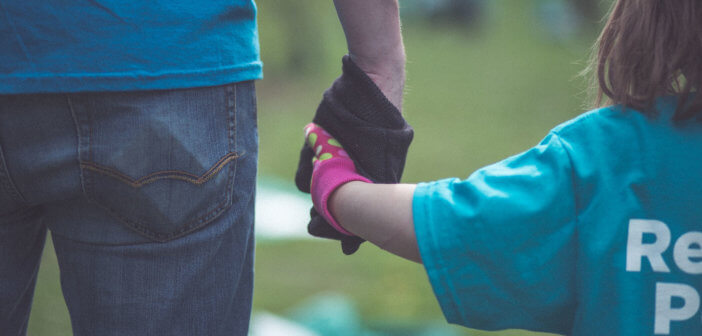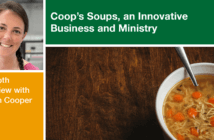Johannah Myers describes a paradigm shift in how we form disciples with a move away from Christian education toward an emphasis on forming people in the practices of the faith. In place of age-level classrooms she sees a need to help people of all ages live out their faith through intergenerational mentoring and experiential learning.
When I first started serving my church, my job title was Director of Christian Education. A few years ago, my title shifted from Christian Education to Christian Formation. At the time, I didn’t really think anything of that change in title. But, considering what discipleship looks like in today’s church and culture, the distinction is quite significant.
From information to formation
For a long time, churches have focused on forming disciples through educating people — teaching the Bible, teaching doctrine, and teaching beliefs. We instituted the model of formal education — a schoolhouse model with Sunday School classes for every different age level focused on imparting information. And we assumed people would figure out on their own how to put faith into practice once they’d had a chance to learn.
But discipleship is more about formation than it is about information. Thinking about discipleship through the lens of formation means we help people grow by focusing on how they practice faith in all aspects of their lives. Some of that involves education. But to a greater extent, it’s a matter of providing space for people to put faith into action. How are we coming alongside people in our churches and our communities to help them grow and mature as followers of Jesus? It’s a subtle shift, but it’s an important one.
From belonging to believing
In her book Christianity After Religion: The End of Church and the Birth of a New Spiritual Awakening, Diana Butler Bass describes how a shift is underway in the work of forming disciples. For previous generations, the task was first teaching beliefs that would lead to certain behaviors. Once people shared common beliefs and behaviors, they would develop a sense of belonging to a common community. But today, the sequence is likely to be just the opposite. Discipleship doesn’t necessarily start with belief. It’s more likely today that someone finds a community of belonging. And then as part of that community, they learn to practice the faith. Beliefs are shaped by the sense of belonging and the behaviors and practices of the community. It’s not that beliefs are unimportant, but that the starting point is different.
From age-level ministry to intergenerational ministry
If our whole approach to disciple making is about educating people, age-level ministry becomes incredibly important because teaching a five-year-old is different than teaching a ten-year-old, a youth, or a young adult. But if the focus is on developing practices, it is important to learn from people who are skilled in the practices of faith. And interspersing the generations makes more sense than having everyone broken down into age-level ministry groupings.
Take for instance the practice of prayer. People don’t automatically know how to pray. They learn. They learn by watching others and then trying it out for themselves. An approach to prayer might involve putting people who have been praying their whole lives alongside those who are just learning to pray so they can practice praying together. Instead of dividing everyone into silos, we can invite young people and those of any age who are new to the faith to come alongside longtime practitioners of the faith. Anyone learning a craft or a skill benefits from the wisdom of those who have been practicing it longer. But it also true that when we break out of our age-level silos, learning and formation can flow both ways. Children and new people can help seasoned disciples explore different ways of approaching prayer, scripture study, and worship. Breaking down some of the silos can benefit everyone.
When we shift our thinking from sharing information to helping people live the faith, our focus expands beyond Sunday School classes, Bible study groups, or even worship. It helps us see the faith as something to be lived Sunday to Saturday in a way that encompasses the whole community as one unified Body.
Related Resources
- Leading Ideas Talks Podcast Episode 49: What is Messy Church featuring Johannah Myers
- Friendship as a Means of Discipleship by Greg Moore
- 7 Steps for Making Disciples Through Relational Mentoring by Ken Carter and Audrey Warren
If you would like to share this article in your newsletter or other publication, please review our reprint guidelines.







